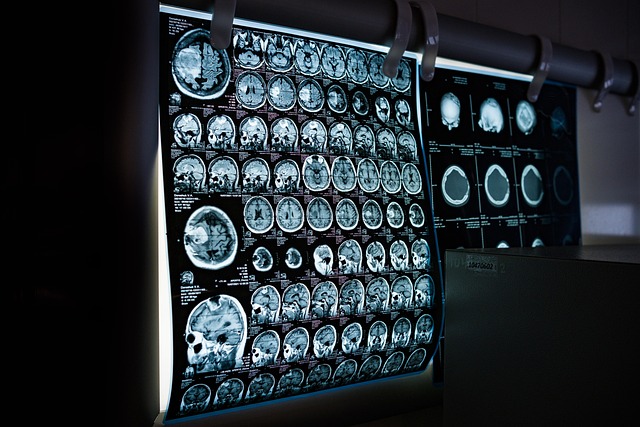Functional imaging techniques, particularly advanced whole-body cancer scans combining MRI, CT, and PET, offer a non-invasive way to track tumor metabolism, enabling early detection and personalized treatment for cancer. These tools identify active tumors, predict patient outcomes, and facilitate tailored therapies, ultimately enhancing survival rates by providing a comprehensive view of the patient's condition. The future of cancer care looks promising with continuous advancements in functional imaging, including real-time tracking of tumor growth across multiple organs, leading to improved patient outcomes and quality of life.
Functional imaging techniques revolutionize tumor analysis by providing insights into cancer’s metabolic activities and anatomical positions. This article delves into three key aspects of advanced cancer diagnosis and treatment planning. First, we explore understanding functional imaging and its ability to unveil cancer’s secrets. Second, we highlight the benefits of whole-body cancer scans for comprehensive tumor detection and characterization. Finally, we discuss cutting-edge techniques like PET and MRI, as well as future prospects in functional imaging methods that enhance treatment precision.
Understanding Functional Imaging: Unveiling Cancer's Metabolic Secrets
Functional imaging offers a powerful window into the complex metabolic activities of tumors, providing critical insights that can aid in their early detection and tailored treatment. Unlike traditional anatomical imaging techniques like MRI or CT scans, which primarily visualize structural features, functional imaging tracks physiological processes and biochemical reactions within the body. This approach allows researchers and clinicians to understand how cancer cells behave and interact with their microenvironment.
One of the key advantages of functional imaging, particularly through advanced whole-body cancer scans, is its ability to identify subtle metabolic changes that may not be evident on standard anatomical images. By measuring parameters such as blood flow, oxygen consumption, and glucose metabolism, these techniques can highlight active tumor growth, assess treatment response, and predict patient outcomes. This knowledge enables more precise decision-making in cancer management, ultimately improving patient care and survival rates.
Whole-Body Cancer Scan: A Comprehensive Approach to Tumor Detection and Characterization
The whole-body cancer scan represents a significant advancement in functional imaging techniques, offering a comprehensive approach to tumor detection and characterization. This non-invasive method employs advanced technologies such as magnetic resonance imaging (MRI), computed tomography (CT), and positron emission tomography (PET) to simultaneously visualize and assess various types of tumors across the entire body. By combining these modalities, healthcare professionals can gain a holistic understanding of a patient’s cancerous lesions, enabling more accurate diagnosis, staging, and treatment planning.
Unlike traditional imaging methods that focus on specific body parts, whole-body scans provide a bird’s-eye view of potential tumor growth and metastases. This comprehensive assessment is particularly crucial in detecting subtle or early-stage tumors that may be missed by conventional techniques. Moreover, these scans can help differentiate between benign and malignant masses, assess the extent of tumor invasion, and identify lymph node involvement, all of which play vital roles in tailoring personalized treatment strategies for optimal patient outcomes.
Advanced Techniques: From PET to MRI, Mapping Cancer's Journey
Advanced imaging techniques have revolutionized the way we detect and track cancer, offering a comprehensive view of this complex disease. Positron Emission Tomography (PET) and Magnetic Resonance Imaging (MRI) are two powerful tools in the arsenal of oncologists. PET scans, with their ability to pinpoint metabolic activity, are invaluable for identifying tumor growth and assessing treatment response. By tagging specific molecules that cancer cells utilize, these scans provide a detailed map of the tumor’s journey and its interaction with surrounding tissues.
On the other hand, MRI offers an unprecedented look into the body’s internal structures, including soft tissues, making it ideal for monitoring the progress of treatments like radiation therapy. With high spatial resolution, MRI can detect subtle changes in tumors, helping healthcare professionals make informed decisions. Combining PET and MRI enables a whole-body cancer scan, ensuring no lesion goes unnoticed, and providing a holistic understanding of the patient’s condition.
Future Prospects: Enhancing Treatment Planning with Innovative Functional Imaging Methods
The future of tumor analysis and treatment planning looks promising with the continuous development of functional imaging techniques. Researchers are constantly pushing the boundaries, aiming to create more advanced and comprehensive methods for early detection and precise characterization of tumors. One of the most anticipated innovations is the integration of whole-body cancer scans, offering a non-invasive way to visualize and track tumor growth across multiple organs simultaneously.
These cutting-edge techniques promise improved accuracy in treatment planning by providing a dynamic and detailed understanding of the patient’s condition. By analyzing real-time data, healthcare professionals can make more informed decisions, tailoring treatments to individual needs. This shift towards personalized medicine, enabled by advanced imaging, has the potential to revolutionize cancer care, leading to better outcomes and enhanced quality of life for patients.
Functional imaging techniques, ranging from PET to advanced MRI scans, offer a comprehensive and innovative approach to tumor analysis. The ability to visualize cancer’s metabolic activity and track its progression enables healthcare professionals to make more informed decisions. Whole-body cancer scans provide an invaluable tool for early detection and precise characterization, revolutionizing treatment planning. As technology advances, these methods will undoubtedly enhance patient outcomes and shape the future of cancer care, making every scan a step closer to a healthier world.
